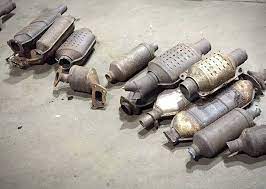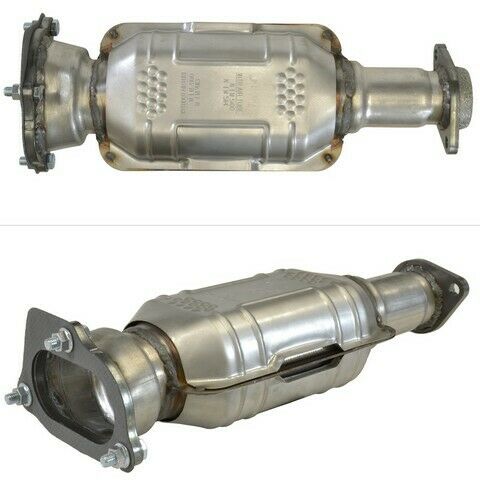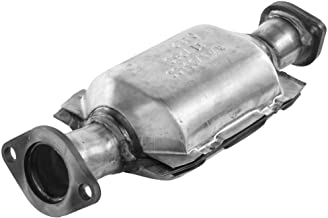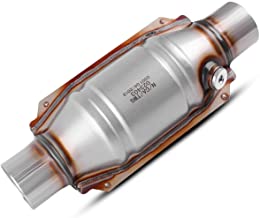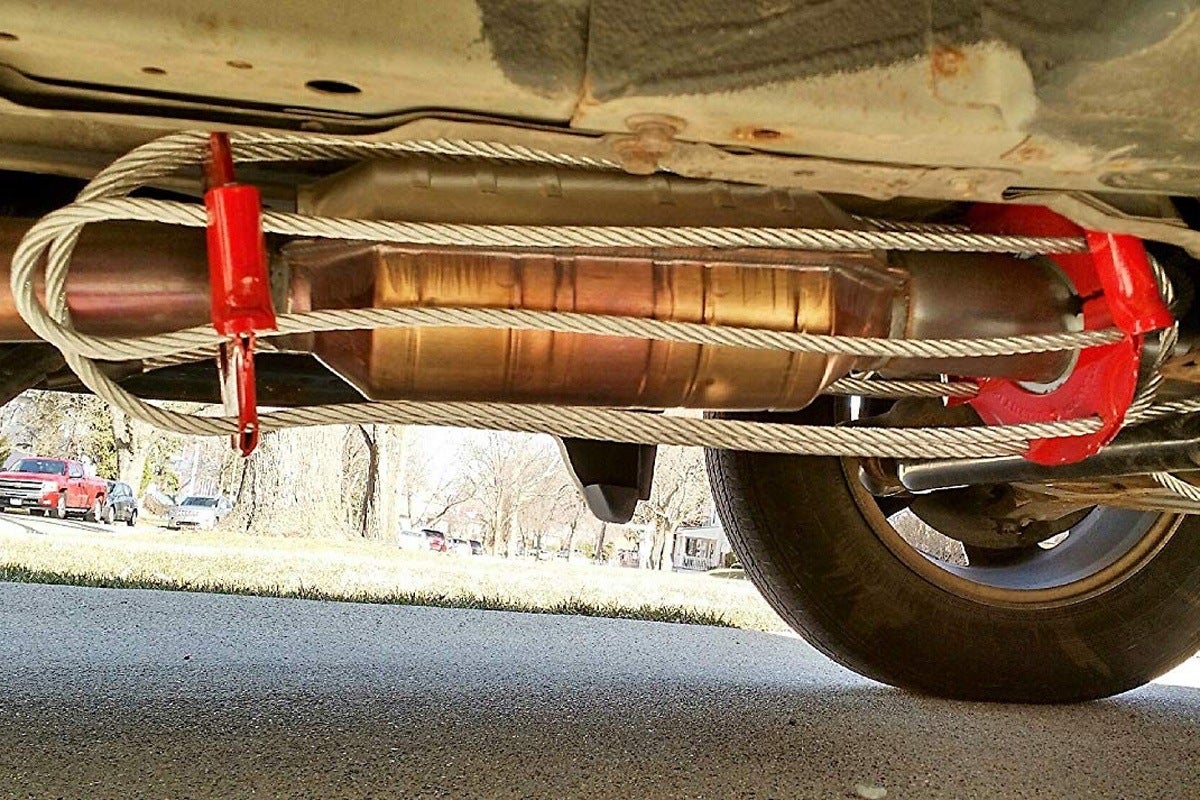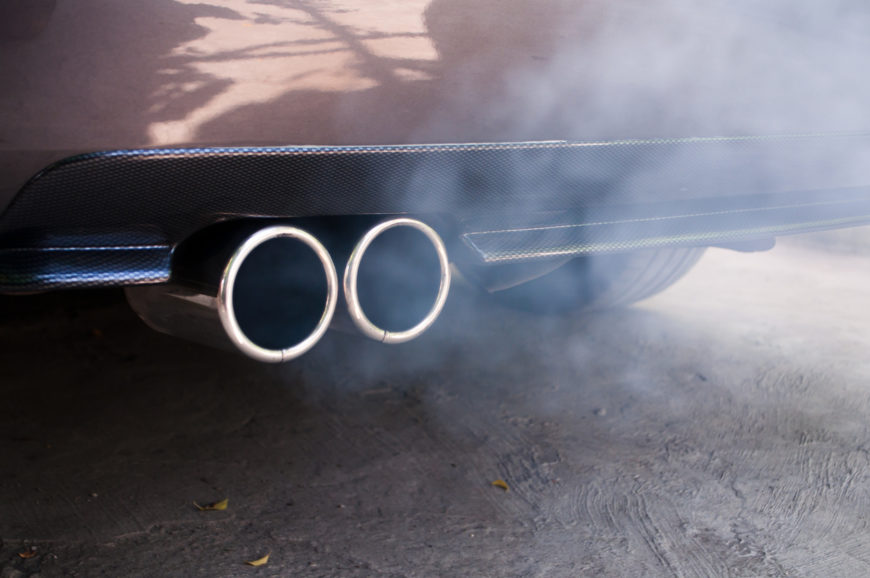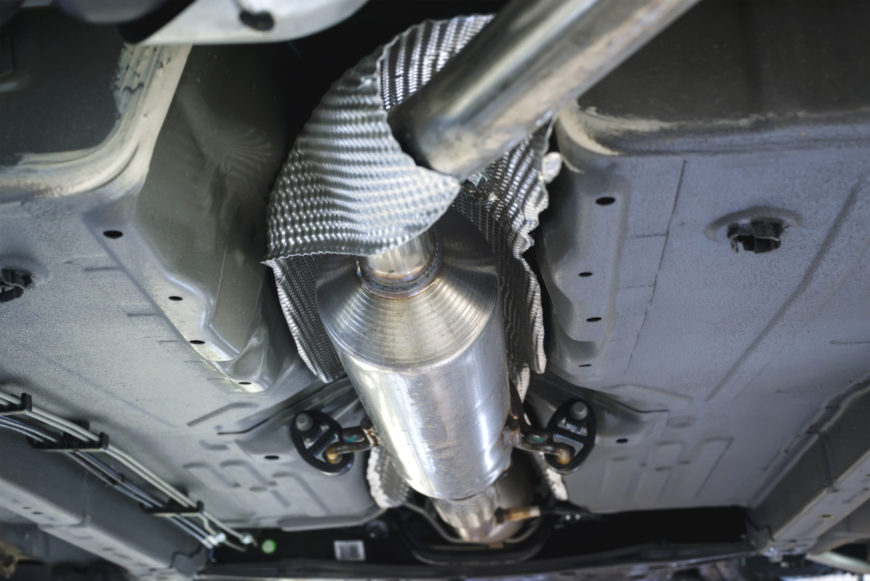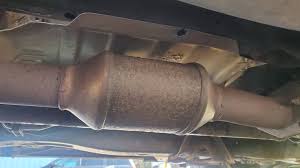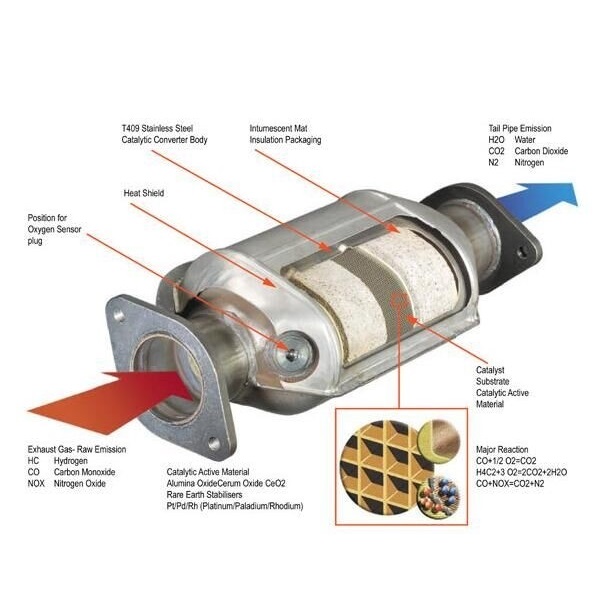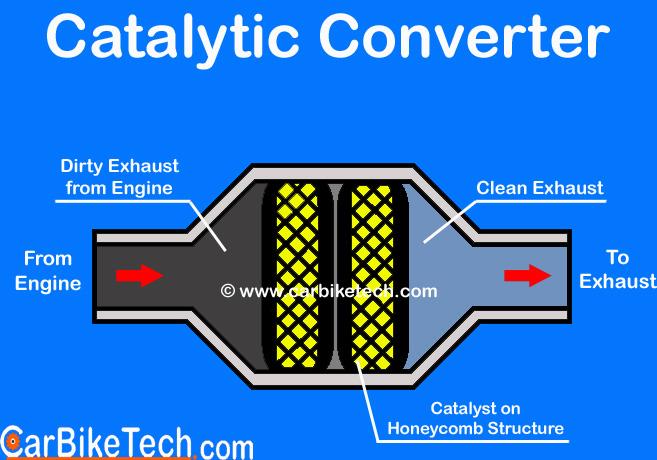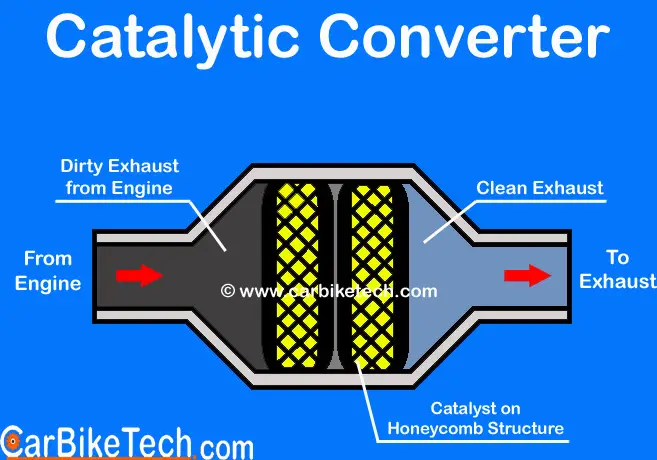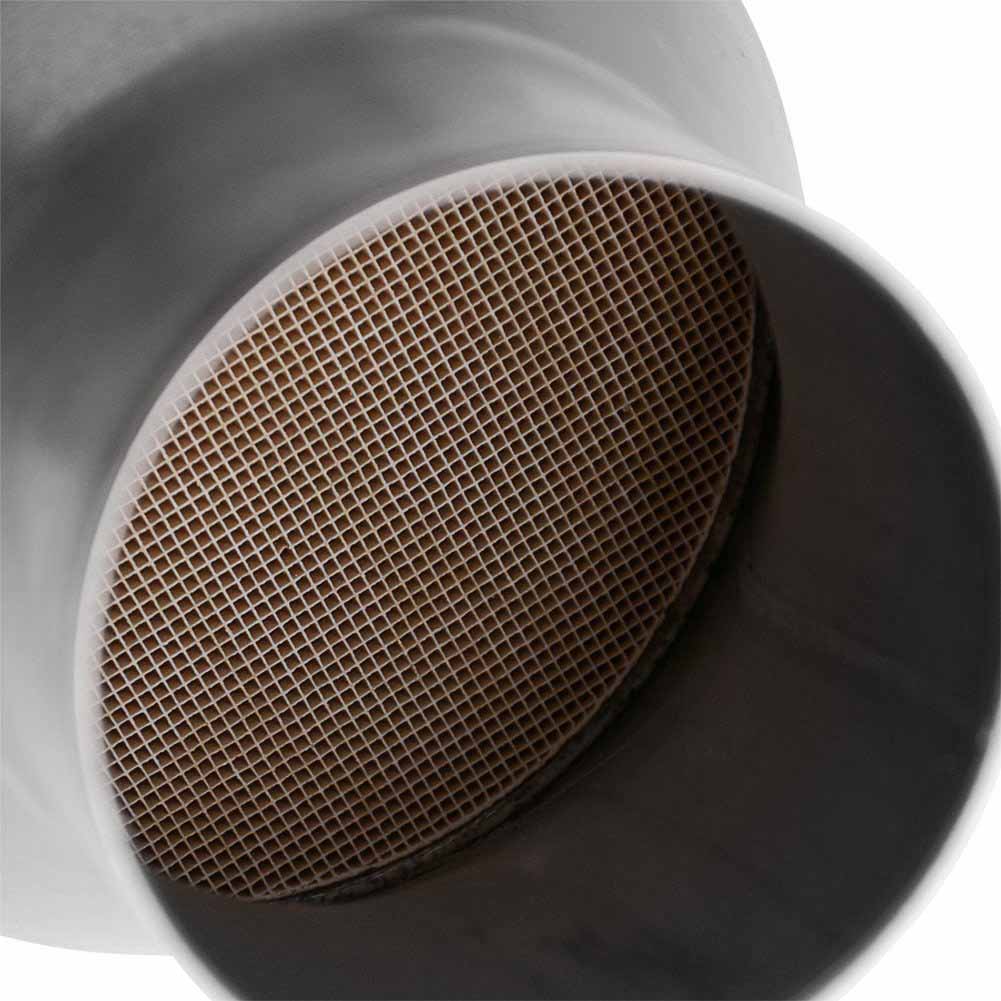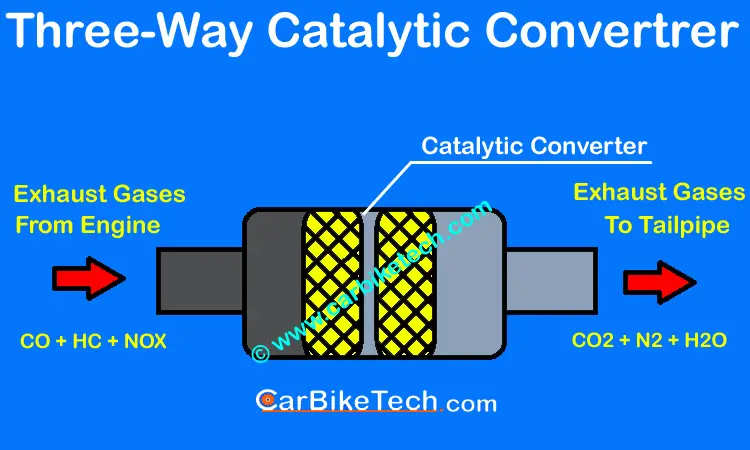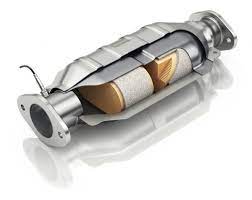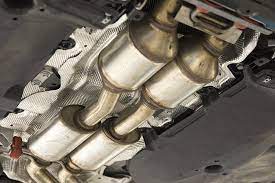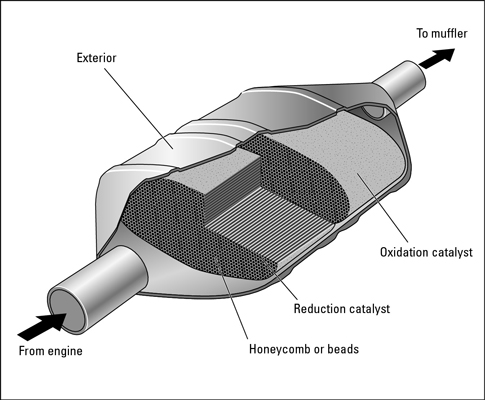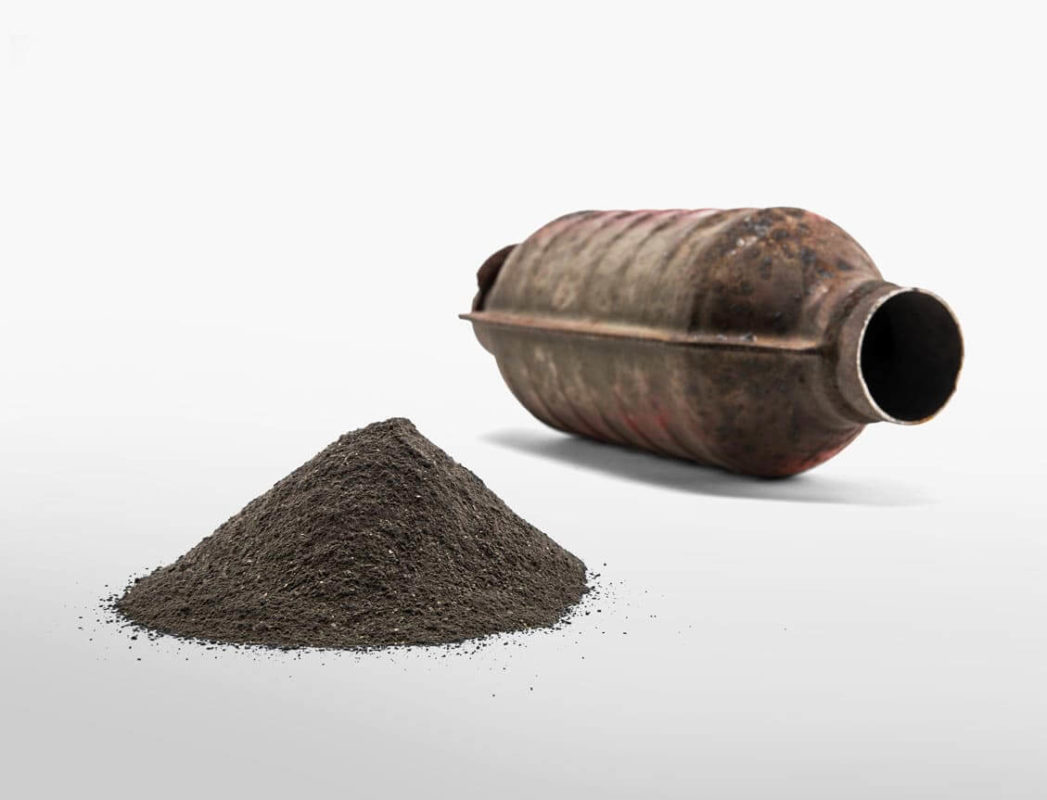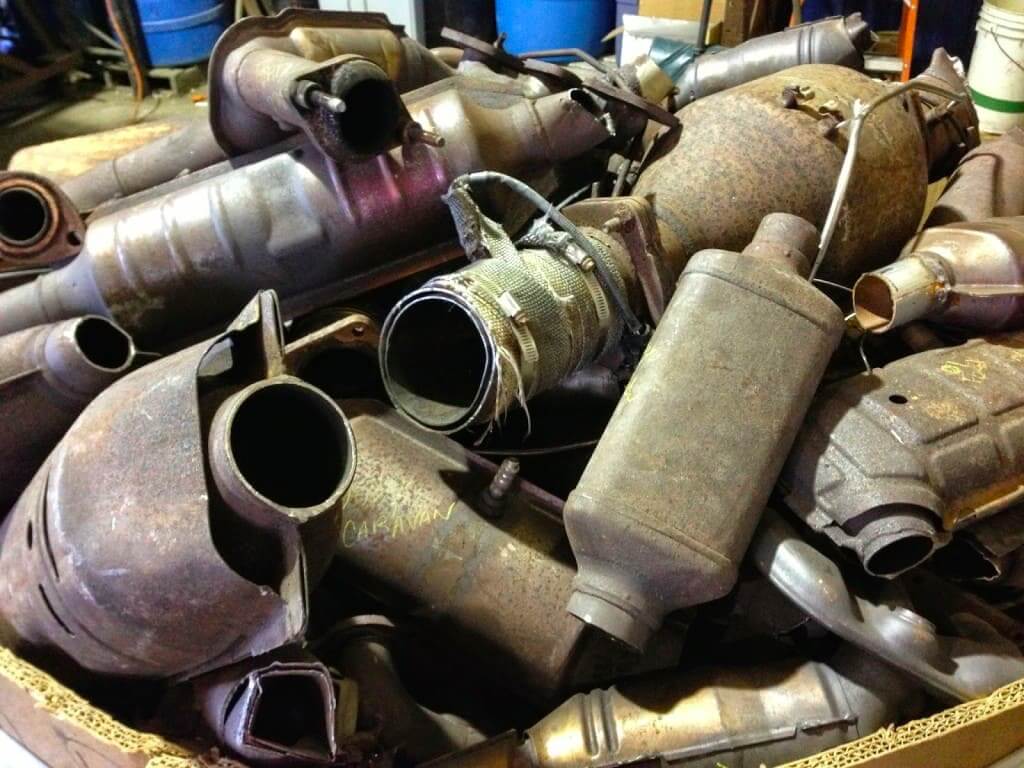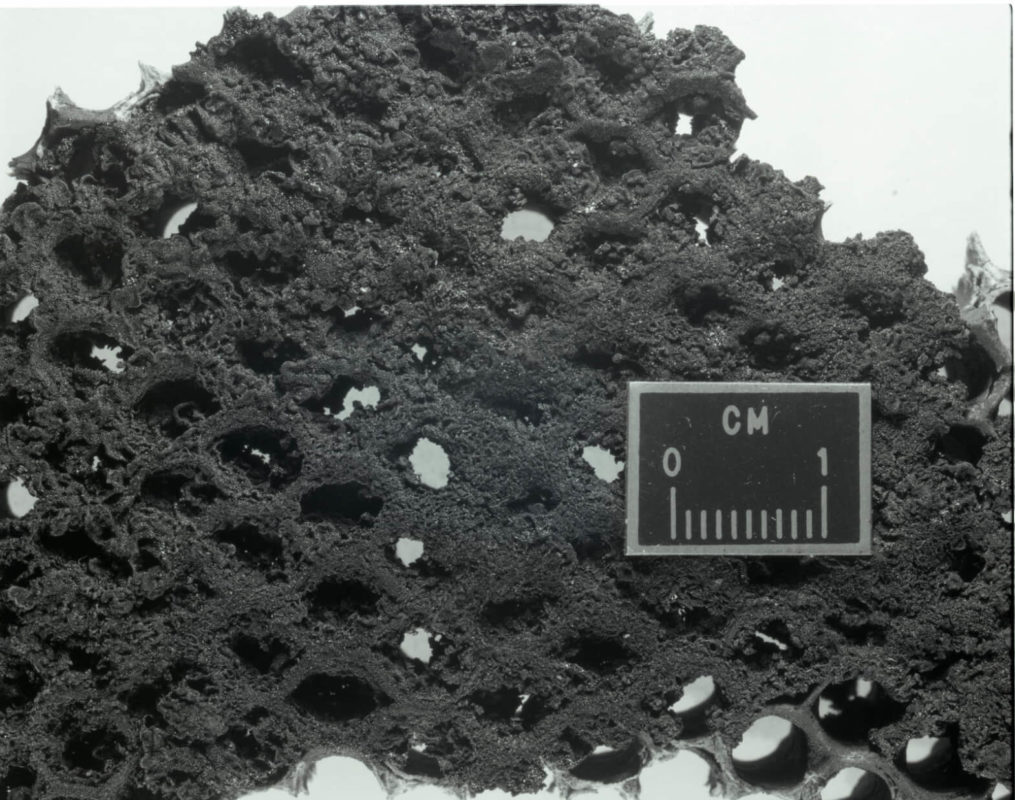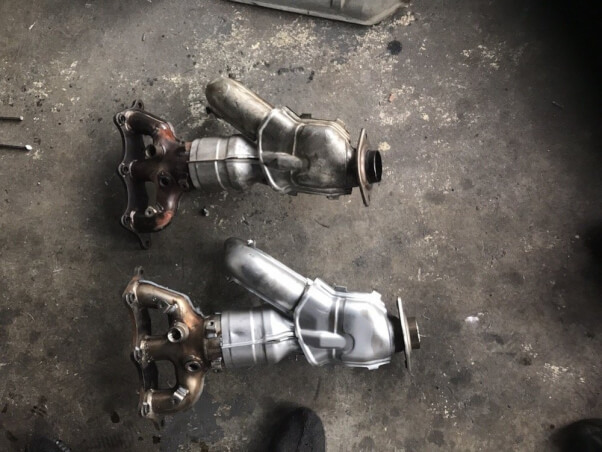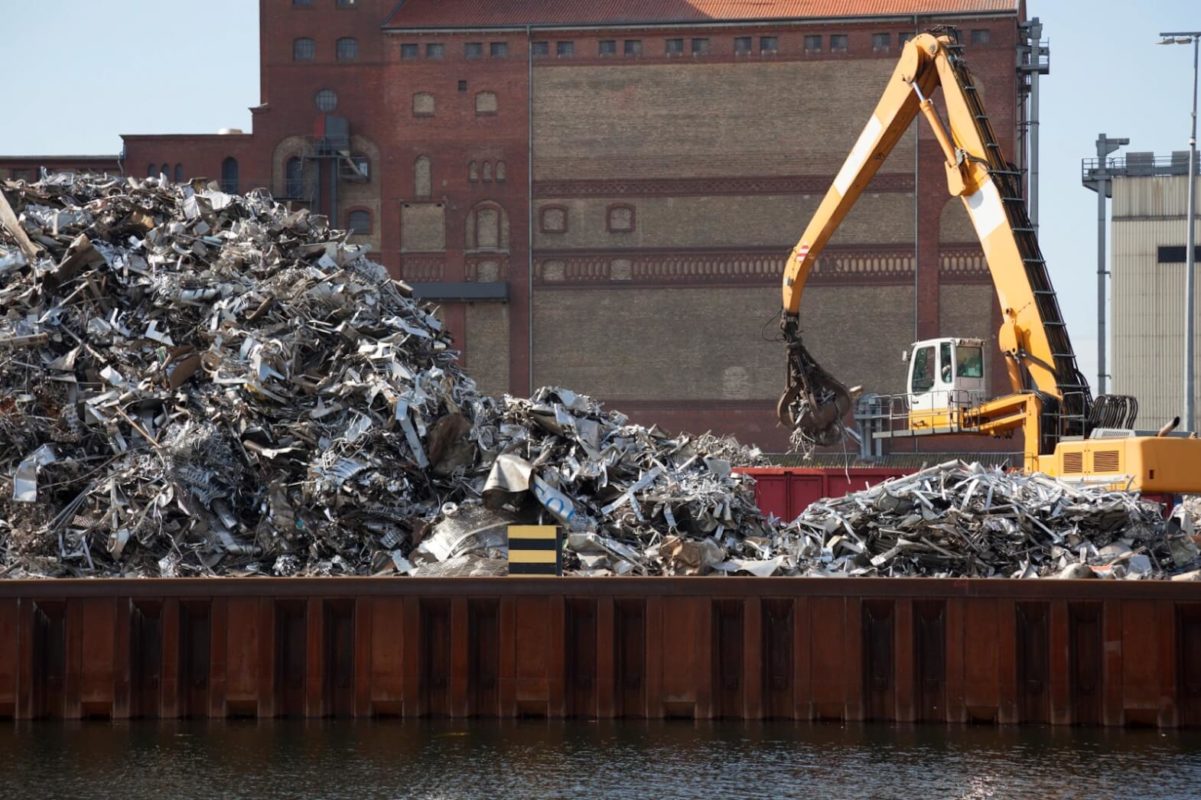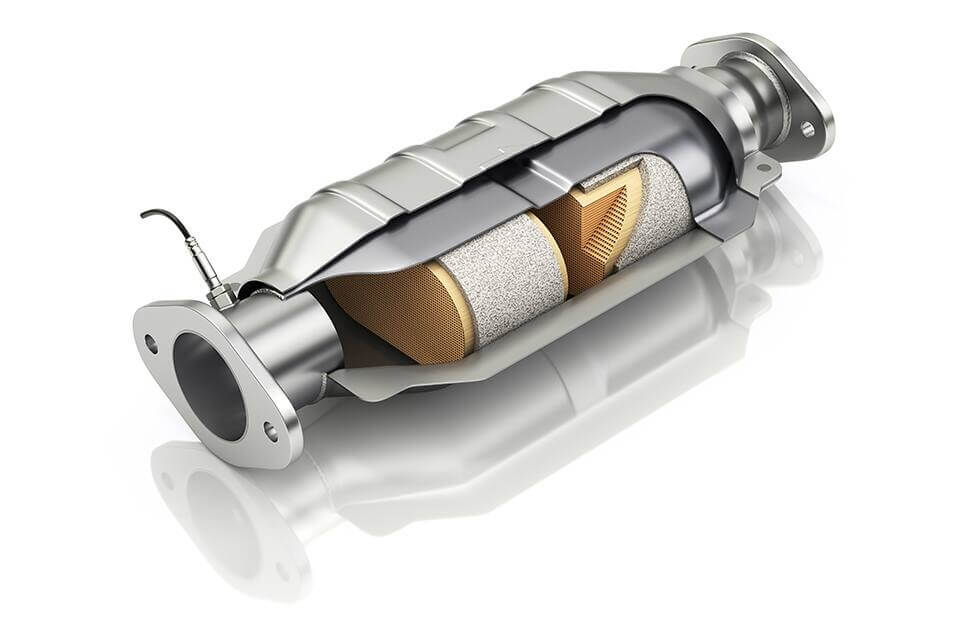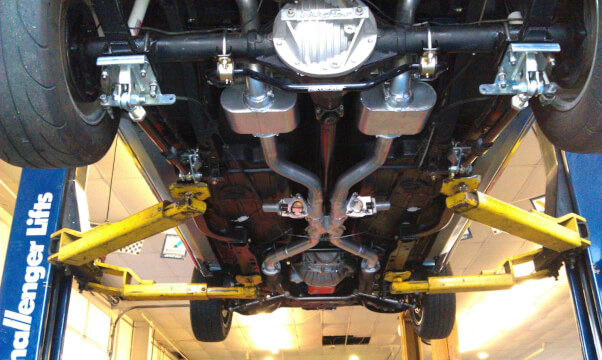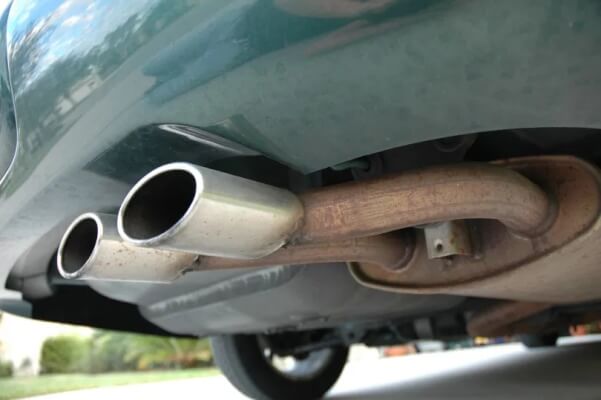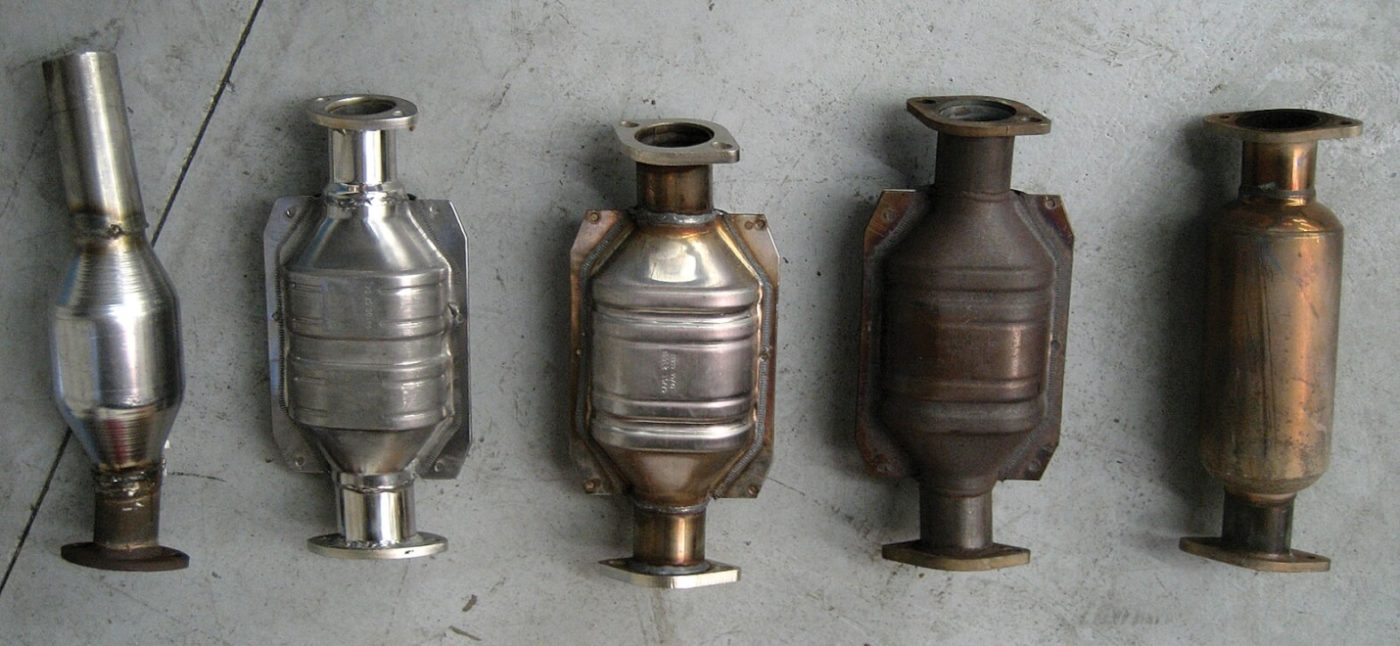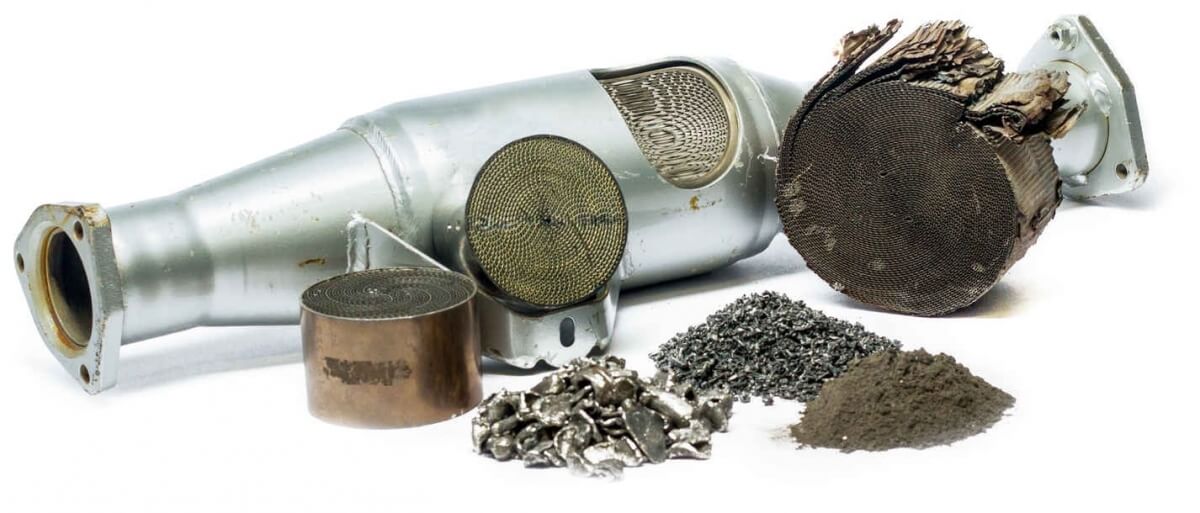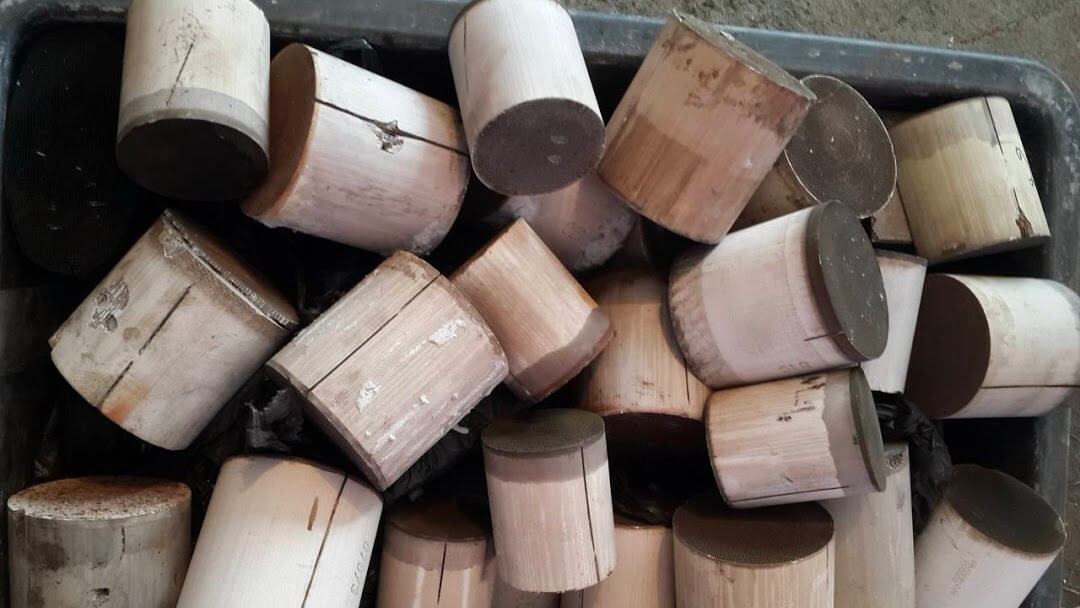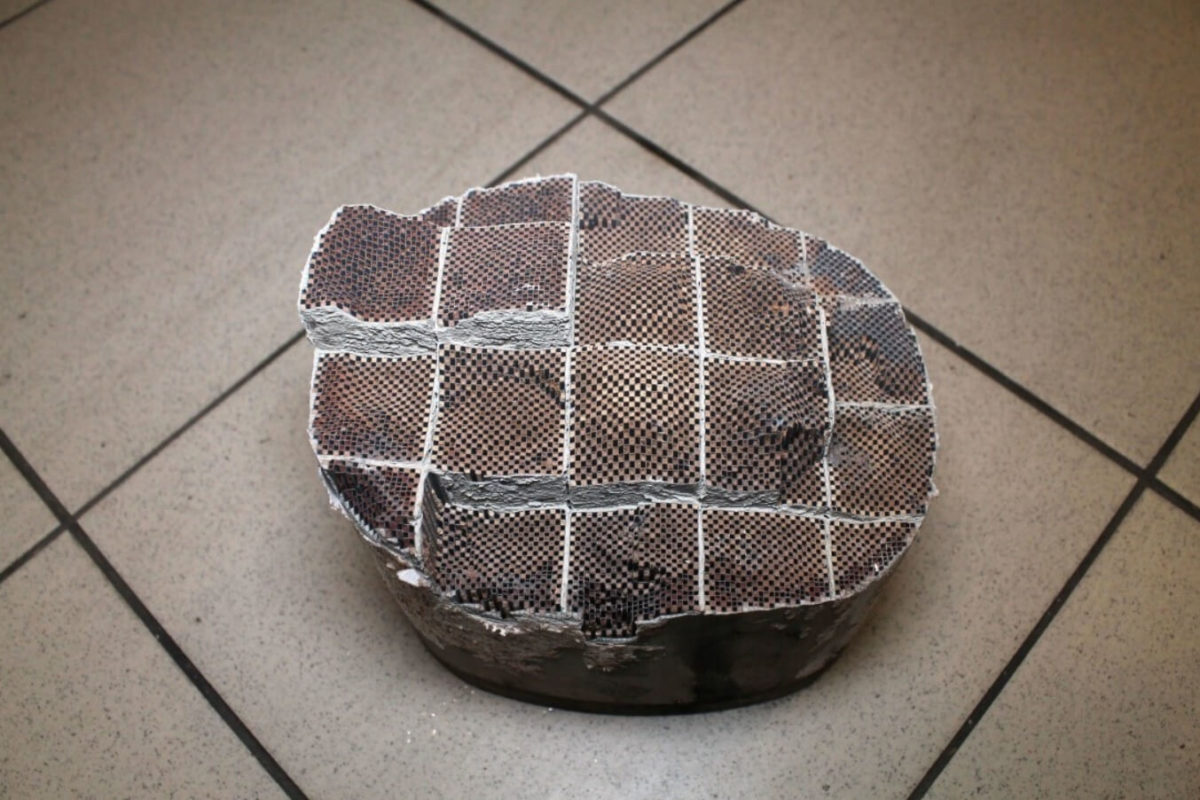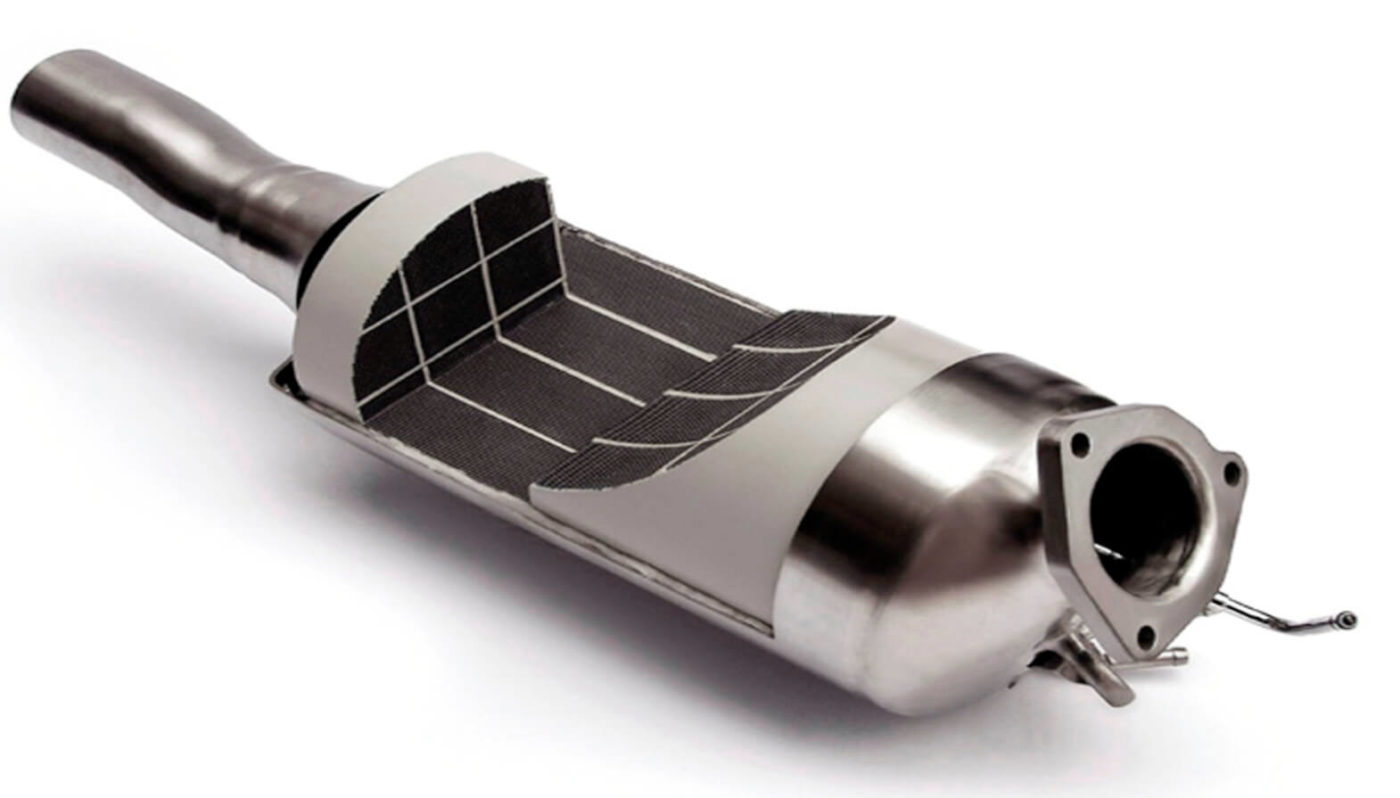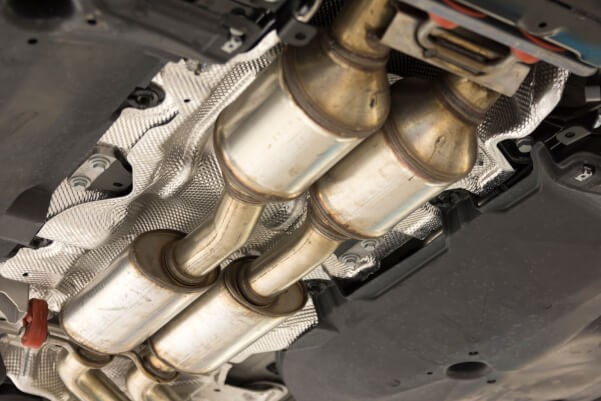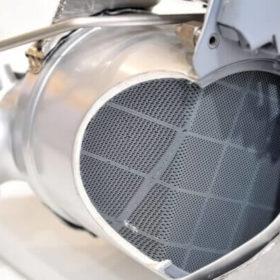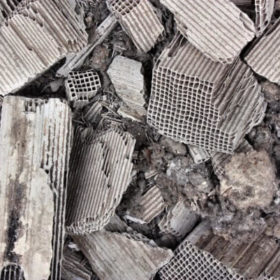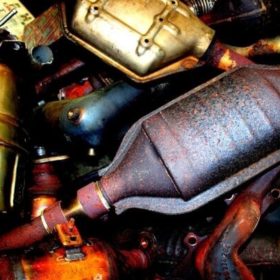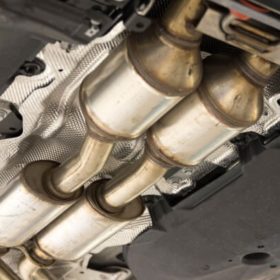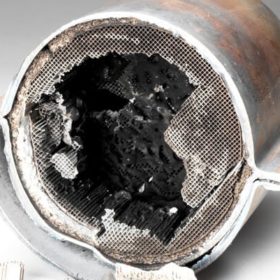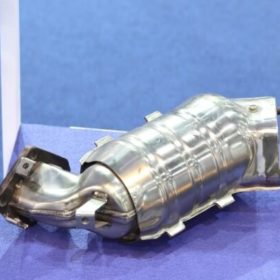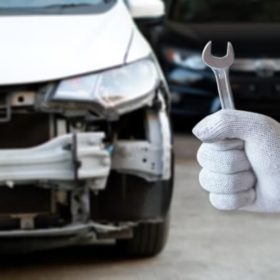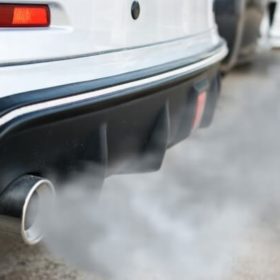James L. Amos/National Geographic/Getty Images
A large pile of platinum lined catalytic converters. See more green living pictures.
There are millions of cars on the road in the United States, and each one is a source of air pollution. Especially in large cities, the amount of pollution that all the cars produce together can create big problems.
To solve those problems, cities, states and the federal government create clean-air laws that restrict the amount of pollution that cars can produce. Over the years, automakers have made many refinements to car engines and fuel systems to keep up with these laws. One of these changes came about in 1975 with an interesting device called a catalytic converter. The job of the catalytic converter is to convert harmful pollutants into less harmful emissions before they ever leave the car’s exhaust system.
Catalytic converters are amazingly simple devices, so it is incredible to see how big an impact they have. In this article, you will learn which pollutants are produced by an engine and how a catalytic converter deals with each of these pollutants to help reduce
[edit] Types
[edit] Two-way
A two-way catalytic converter has two simultaneous tasks:
Oxidation of carbon monoxide to carbon dioxide: 2CO + O2 → 2CO2
Oxidation of unburnt hydrocarbons (unburnt and partially-burnt fuel) to carbon dioxide and water: CxH2x+2 + [(3x+1)/2] O2 → xCO2 + (x+1) H2O (a combustion reaction)
This type of catalytic converter is widely used on diesel engines to reduce hydrocarbon and carbon monoxide emissions. They were also used on gasoline engines in USA market automobiles until 1981. Due to their inability to control nitrous oxide NOHYPERLINK “http://en.wikipedia.org/wiki/NOx”x, they were superseded by three-way converters.
[edit] Three-way
Since 1981, three-way catalytic converters have been used in vehicle emission control systems in North America and many other countries on roadgoing vehicles. A three-way catalytic converter has three simultaneous tasks:
Reduction of nitrogen oxides to nitrogen and oxygen: 2NOx → xO2 + N2
Oxidation of carbon monoxide to carbon dioxide: 2CO + O2 → 2CO2
Oxidation of unburnt hydrocarbons (HC) to carbon dioxide and water: CxH2x+2 + [(3x+1)/2]O2 → xCO2 + (x+1)H2O
These three reactions occur most efficiently when the catalytic converter receives exhaust from an engine running slightly above the stoichiometric point. This point is between 14.6 and 14.8 parts air to 1 part fuel, by weight, for gasoline. The ratio for LPG, natural gas and ethanol fuels is slightly different, requiring modified fuel system settings when using those fuels. Generally, engines fitted with 3-way catalytic converters are equipped with a computerized closed-loop feedback fuel injection system using one or more oxygen sensors, though early in the deployment of 3-way converters, carburetors equipped for feedback mixture control were used. While a 3-way catalyst can be used in an open-loop system, NOx reduction efficiency is low. Within a narrow fuel/air ratio band surrounding stoichiometry, conversion of all three pollutants is nearly complete. However, outside that band, conversion efficiency falls very rapidly. When there is more oxygen than required, the system is said to be running lean, and the system is in oxidizing condition. In that case, the converter’s two oxidizing reactions (oxidation of CO and hydrocarbons) are favoured, at the expense of the reduction of NOx. When there is excessive fuel, the engine is running rich; the reduction of NOx is favoured, at the expense of CO and HC oxidation.
[edit] Oxygen storage
Three-way catalytic converters can store oxygen from the exhaust gas stream, usually when the air fuel ratio goes lean.[5] When insufficient oxygen is available from the exhaust stream, the stored oxygen is released and consumed (see cerium(IV) oxide). This lean-ness occurs either when oxygen derived from NOx reduction is unavailable or certain maneuvers such as hard acceleration enrich the mixture beyond the ability of the converter to supply oxygen.
[edit] Unwanted reactions
Unwanted reactions can occur in the three-way catalyst, such as the formation of odiferous hydrogen sulfide and ammonia. Formation of each can be limited by modifications to the washcoat and precious metals used. It is difficult to eliminate these byproducts entirely. Sulfur-free or low-sulfur fuels eliminate or reduce hydrogen sulfide.
For example, when control of hydrogen sulfide emissions is desired, nickel or manganese is added to the washcoat. Both substances act to block the adsorption of sulfur by the washcoat. Hydrogen sulfide is formed when the washcoat has adsorbed sulfur during a low temperature part of the operating cycle, which is then released during the high temperature part of the cycle and the sulfur combines with HC.
[edit] For diesel engines
For compression-ignition (i.e., diesel) engines, the most commonly used catalytic converter is the diesel oxidation catalyst. This catalyst uses O2 (oxygen) in the exhaust gas stream to convert CO (carbon monoxide) to CO2 (carbon dioxide) and HC (hydrocarbons) to H2O (water) and CO2. These converters often operate at 90% efficiency, virtually eliminating diesel odor and helping to reduce visible particulates (soot). But they cannot reduce NOx because chemical reactions always occur in the simplest possible way, and the existing O2 in the exhaust gas stream would react first.
To reduce NOx on a compression ignition engine, the chemical composition of the exhaust must first be changed. Two main techniques are used: exhaust gas recirculation (EGR) and selective catalytic reduction (SCR). NOx trapping (with NOx absorbers) is a third method, but as of yet (2010), is not widely used.
Diesel engine exhaust contains relatively high levels of particulate matter (soot), consisting in large part of elemental carbon. Catalytic converters cannot clean up elemental carbon, though they do remove up to 90% of the soluble organic fraction[citation needed], so particulates are cleaned up by a soot trap or diesel particulate filter (DPF). In the United States, all on-road heavy-duty vehicles powered by diesel and built after 1 January 2007 must be equipped with a catalytic converter and a diesel particulate filter.[6]
Instead of catalysis, a reagent such as ammonia pyrolyzed in situ from urea, is sometimes used to reduce the NOx into nitrogen. One trademark product to do this is AdBlue.
[edit] For lean-burn engines
For lean burn spark ignition engines, an oxidation catalyst is used in the same manner as in a diesel engine.
[edit] Installation
Many vehicles have a pre-catalyst located close to the engine’s exhaust manifold. This unit heats up quickly due to its proximity to the engine, and reduces cold-engine emissions by burning off hydrocarbons from the extra-rich mixture used in a cold engine.
Many three-way catalytic converters utilize an air injection tube between the first (NOx reduction) and second (HC and CO oxidation) stages of the converter. This tube is fed by a secondary air injection system. The injected air provides oxygen for the catalyst’s oxidizing reaction. These systems also sometimes include an upstream air injector to admit oxygen to the exhaust system before it reaches the catalytic converter. This precleans the extra-rich exhaust from a cold engine, and helps bring the catalytic converter quickly up to operating temperature.
Some newer systems do not employ air injection. Instead, they provide a constantly varying mixture that quickly and continually cycles between lean and rich to keep the first catalyst (NOx reduction) from becoming oxygen loaded, and to keep the second catalyst (CO oxidization) sufficiently oxygen-saturated. They also utilize several oxygen sensors to monitor the exhaust, at least one before the catalytic converter for each bank of cylinders, and one after the converter. Some systems contain the reduction and oxidation functions separately rather than in a common housing.
[edit] Damage
[edit] Poisoning
Catalyst poisoning occurs when the catalytic converter is exposed to exhaust containing substances that coat the working surfaces, encapsulating the catalyst so that it cannot contact and treat the exhaust. The most notable contaminant is lead, so vehicles equipped with catalytic converters can only be run on unleaded gasoline. Other common catalyst poisons include manganese primarily from the gasoline additive MMT, and silicone which can enter the exhaust stream if the engine has a leak allowing coolant into the combustion chamber. Phosphorus is another catalyst contaminant. Although phosphorus is no longer used in gasoline, it (and zinc, another low-level catalyst contaminant) was until recently widely used in engine oil antiwear additives such as ZDDP. Beginning in 2006, a rapid phaseout of ZDDP in engine oils began.[citation needed]
Depending on the contaminant, catalyst poisoning can sometimes be reversed by running the engine under a very heavy load for an extended period of time. The increased exhaust temperature can sometimes liquefy or sublimate the contaminant, removing it from the catalytic surface. However, removal of lead deposits in this manner is usually not possible due to lead’s high boiling point.
[edit] Meltdown
Any condition that causes abnormally high levels of unburned hydrocarbons – raw or partially-burnt fuel – to reach the converter will tend to significantly elevate its temperature, bringing the risk of a meltdown of the substrate and resultant catalytic deactivation and severe exhaust restriction. Vehicles equipped with OBD-II diagnostic systems are designed to alert the driver of a misfire condition, along with other malfunctions, by means of the “Check Engine” light on the dashboard.
[edit] Regulations
This section does not citeany references or sources.
Please help improve this articleby adding citations to reliable sources. Unsourced material may be challengedand removed. (March 2009)
Emissions regulations vary considerably from jurisdiction to jurisdiction. In North America, most spark ignition engines of over 25 brake horsepower (19 kW) output built after January 1, 2004 are equipped with three-way catalytic converters. In Japan, a similar set of regulations came into effect January 1, 2007, while the European Union has not yet enacted analogous regulations. Most automobile spark ignition engines in North America have been fitted with catalytic converters since the mid-1970s, and the technology used in non-automotive applications is generally based on automotive technology.
Regulations for diesel engines are similarly varied, with some jurisdictions focusing on NOx (nitric oxide and nitrogen dioxide) emissions and others focusing on particulate (soot) emissions. The regulatory diversity is challenging for manufacturers of the engine as it may not be economical to design an engine to meet two sets of regulations.
Regulations of fuel quality vary across jurisdictions. In North America, Europe, Japan, and Hong Kong, gasoline and diesel fuel are highly regulated, and CNG and LPG are being reviewed for regulation. In most of Asia and Africa, the regulations are often lax – in some places sulfur content of the fuel can reach 20,000 parts per million (2%). Any sulfur in the fuel can be oxidized to SO2 (sulfur dioxide) or even SO3 (sulfur trioxide) in the combustion chamber. If sulfur passes over a catalyst, it may be further oxidized in the catalyst, i.e. (SO2 may be further oxidized to SO3). Sulfur oxides are precursors to sulfuric acid, a major component of acid rain. While it is possible to add substances like vanadium to the catalyst wash coat to combat sulfur oxide formation, such addition will reduce the effectiveness of the catalyst. The most effective solution is to further refine fuel at the refinery to produce ultra-low sulfur diesel. Regulations in Japan, Europe, and North America tightly restrict the amount of sulfur permitted in motor fuels. However, the expense of producing such clean fuel make it impractical for use in many developing countries. As a result, cities in these countries with high levels of vehicular traffic suffer from acid rain, which damages stone and woodwork of buildings and damages local ecosystems.
[edit] Negative aspects
Some early converter designs greatly restricted the flow of exhaust, which negatively affected vehicle performance, driveability, and fuel economy.[7] Because they were used with carburetors incapable of precise fuel/air mixture control, they could overheat and set fire to flammable materials under the car.[8] Removing a modern catalytic converter in new condition will only slightly increase vehicle performance without retuning,[9] but their removal or “gutting” continues.[7]HYPERLINK “http://en.wikipedia.org/wiki/Catalytic_converter#cite_note-9″[10] The exhaust section where the converter was may be replaced with a welded-in section of straight pipe, or a flanged section of “test pipe” legal for off-road use that can then be replaced with a similarly fitted converter-choked section for legal on-road use, or emissions testing.[9] In the US and many other jurisdictions, it is illegal to remove or disable a catalytic converter for any reason other than its immediate replacement[citation needed]; vehicles without functioning catalytic converters generally fail emission inspections. The aftermarket supplies high-flow converters for vehicles with upgraded engines, or whose owners prefer an exhaust system with larger-than-stock capacity.[11]
[edit] Warm-up period
Most of the pollution put out by a car occurs during the first five minutes before the catalytic converter has warmed up sufficiently.[12]
[edit] Environmental impact
Catalytic converters have proven to be reliable and effective in reducing noxious tailpipe emissions. However, they may have some adverse environmental impacts in use:
The requirement for a rich burn engine to run at the stoichiometric point means it uses more fuel than a “lean burn” engine running at a mixture of 20:1 or less. This increases the amount of fossil fuel consumed and the carbon dioxide emissions of the vehicle. However, NOx control on lean burn engines is problematic.
Although catalytic converters are effective at removing hydrocarbons and other harmful emissions, they do not solve the fundamental problem created by burning a fossil fuel. In addition to water, the main combustion product in exhaust gas leaving the engine – through a catalytic converter or not – is carbon dioxide (CO2).[13] Carbon dioxide produced from fossil fuels is one of the greenhouse gases indicated by the Intergovernmental Panel on Climate Change (IPCC) to be a “most likely” cause of global warming.[14] Additionally, the U.S. Environmental Protection Agency (EPA) has stated catalytic converters are a significant and growing cause of global warming, due to their release of nitrous oxide (N2O), a greenhouse gas over 300 times more potent than carbon dioxide.[15]
Catalytic converter production requires palladium or platinum; part of the world supply of these precious metals is produced near the Russian city of Norilsk, where the industry (among others) has caused Norilsk to be added to Time Magazine’s list of most polluted places.[16]
[edit] Theft
Due to the external location and the use of valuable precious metals including platinum, palladium, and rhodium, converters are a target for thieves. The problem is especially common among late-model Toyota trucks and SUVs, due to their high ground clearance and easily-removed bolt-on catalytic converters. Welded-in converters are also at risk of theft from SUVs and trucks, as they can be easily removed.[17]HYPERLINK “http://en.wikipedia.org/wiki/Catalytic_converter#cite_note-17″[18] Theft removal of the converter can often inadvertently damage the car’s wiring or fuel line resulting in dangerous consequences. Rises in metal costs in the United States during recent years have led to a large increase in theft incidents of the converter,[19] which can then cost as much as $1000 to replace.[20]
[edit] Diagnostics
Various jurisdictions now legislate on-board diagnostics to monitor the function and condition of the emissions control system, including the catalytic converter. On-board diagnostic systems take several forms.
[edit] Temperature sensors
Temperature sensors are used for two purposes. The first is as a warning system, typically on 2-Way catalytic converters such as are still sometimes used on LPG forklifts. The function of the sensor is to warn of catalytic converter temperature above the safe limit of 750 °C (1,380 °F). More recent catalytic converter designs are not as susceptible to temperature damage and can withstand sustained temperatures of 900 °C (1,650 °F).[citation needed] Temperature sensors are also used to monitor catalyst functioning – usually two sensors will be fitted, with one before the catalyst and one after to monitor the temperature rise over the catalytic converter core. For every 1% of CO in the exhaust gas stream the exhaust gas temperature will rise by 100°C.[citation needed]
[edit] Oxygen sensors
The Oxygen sensor is the basis of the closed loop control system on a spark ignited rich burn engine, however it is also used for diagnostics. In vehicles with OBD II, a second oxygen sensor is fitted after the catalytic converter to monitor the O2 levels. The on-board computer makes comparisons between the readings of the two sensors. If both sensors give the same output, the computer recognizes the catalytic converter is not functioning or removed, and will operate a ‘check engine’ light and retard engine performance. Simple “oxygen sensor simulators” have been developed to circumvent this problem by simulating the change across the catalytic converter with plans and pre-assembled devices available on the internet, though these are not legal for on-road use.[21] Similar devices apply an offset to the sensor signals, allowing the engine to run a more fuel economical lean burn that may however damage the engine or the catalytic converter.[22]
[edit] NOx sensors
NOx sensors are extremely expensive and are generally only used when a compression ignition engine is fitted with a selective catalytic reduction (SCR) converter, or a NOx absorber catalyst in a feedback system. When fitted to an SCR system, there may be one or two sensors. When one sensor is fitted it will be pre-catalyst, when two are fitted the second one will be post catalyst. They are utilized for the same reasons and in the same manner as an oxygen sensor – the only difference is the substance being monitored.



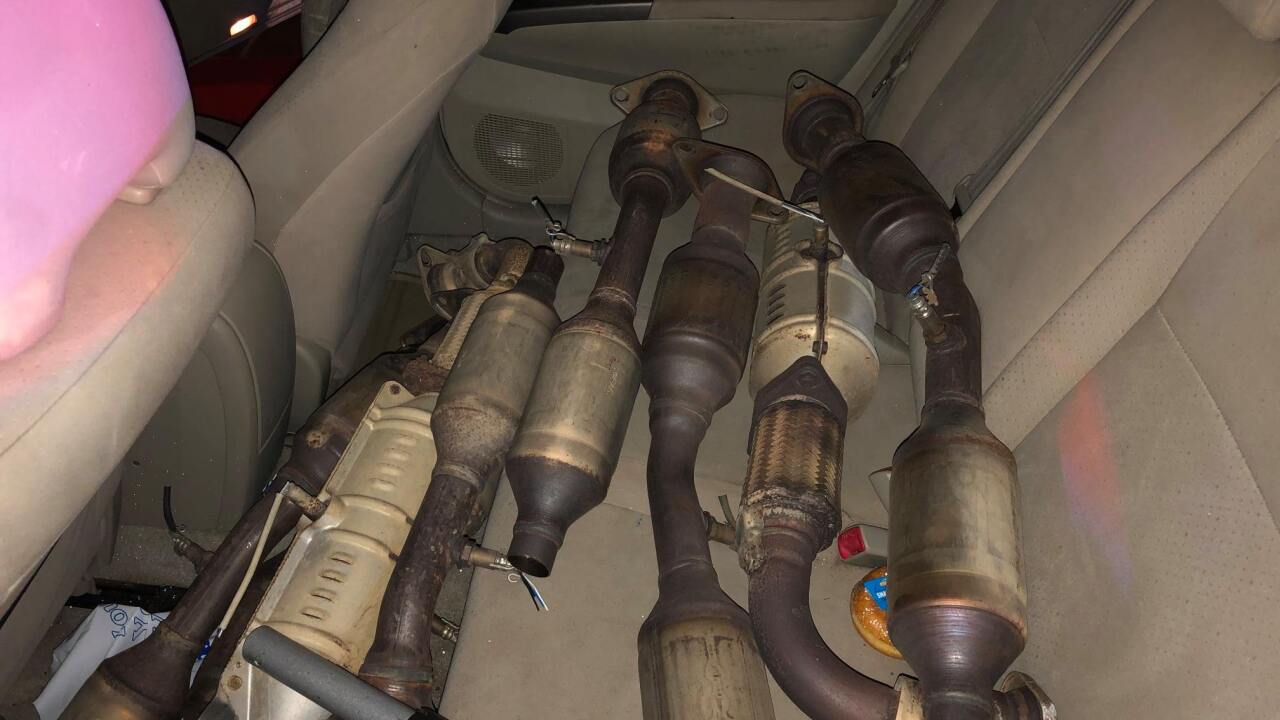



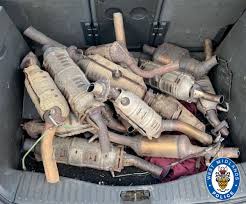
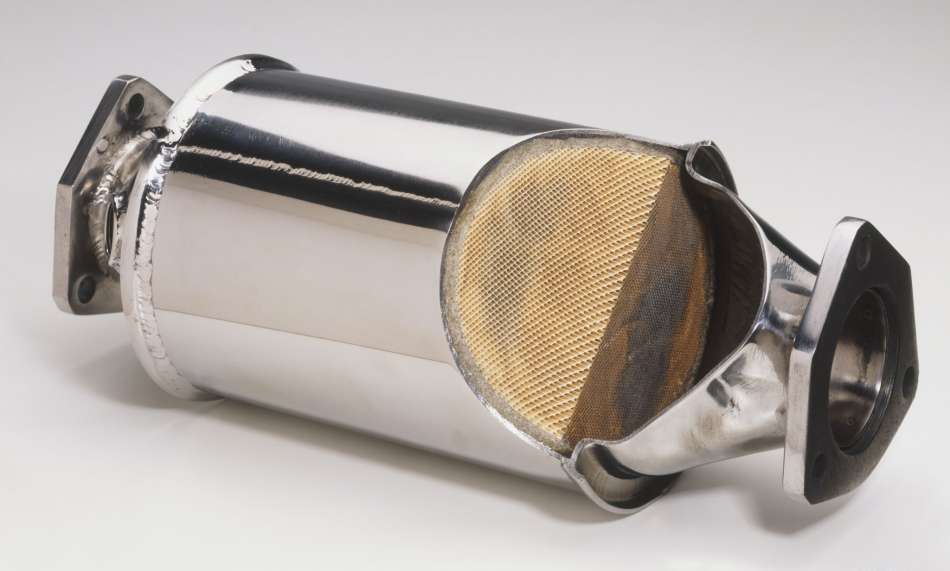
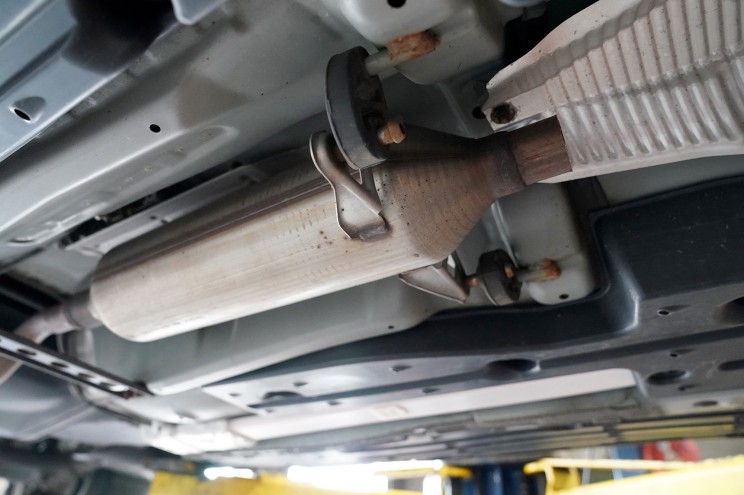

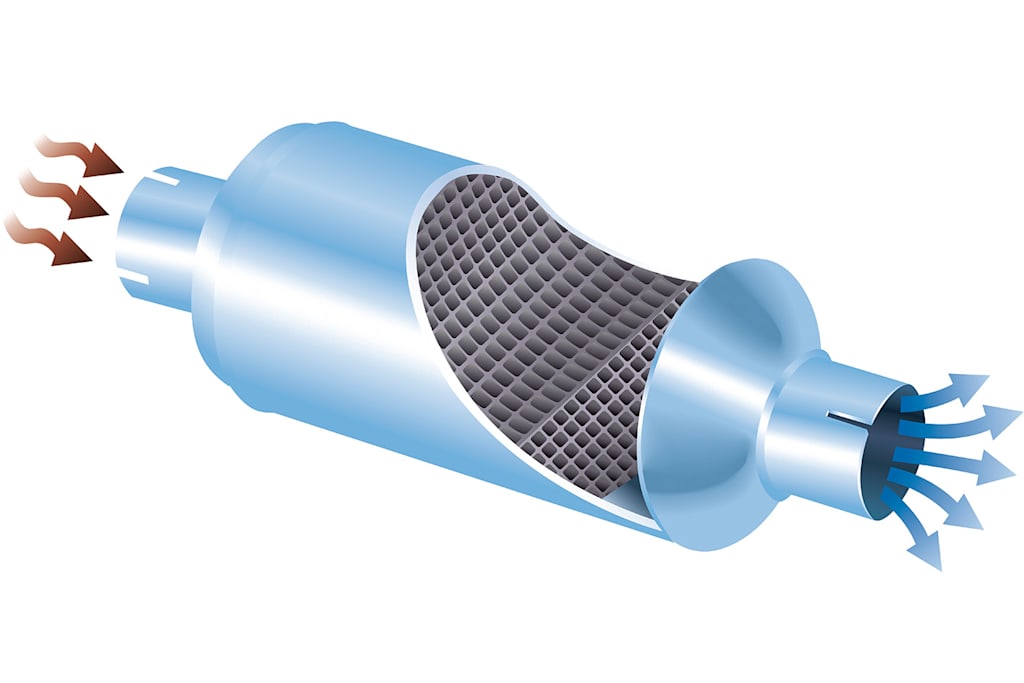

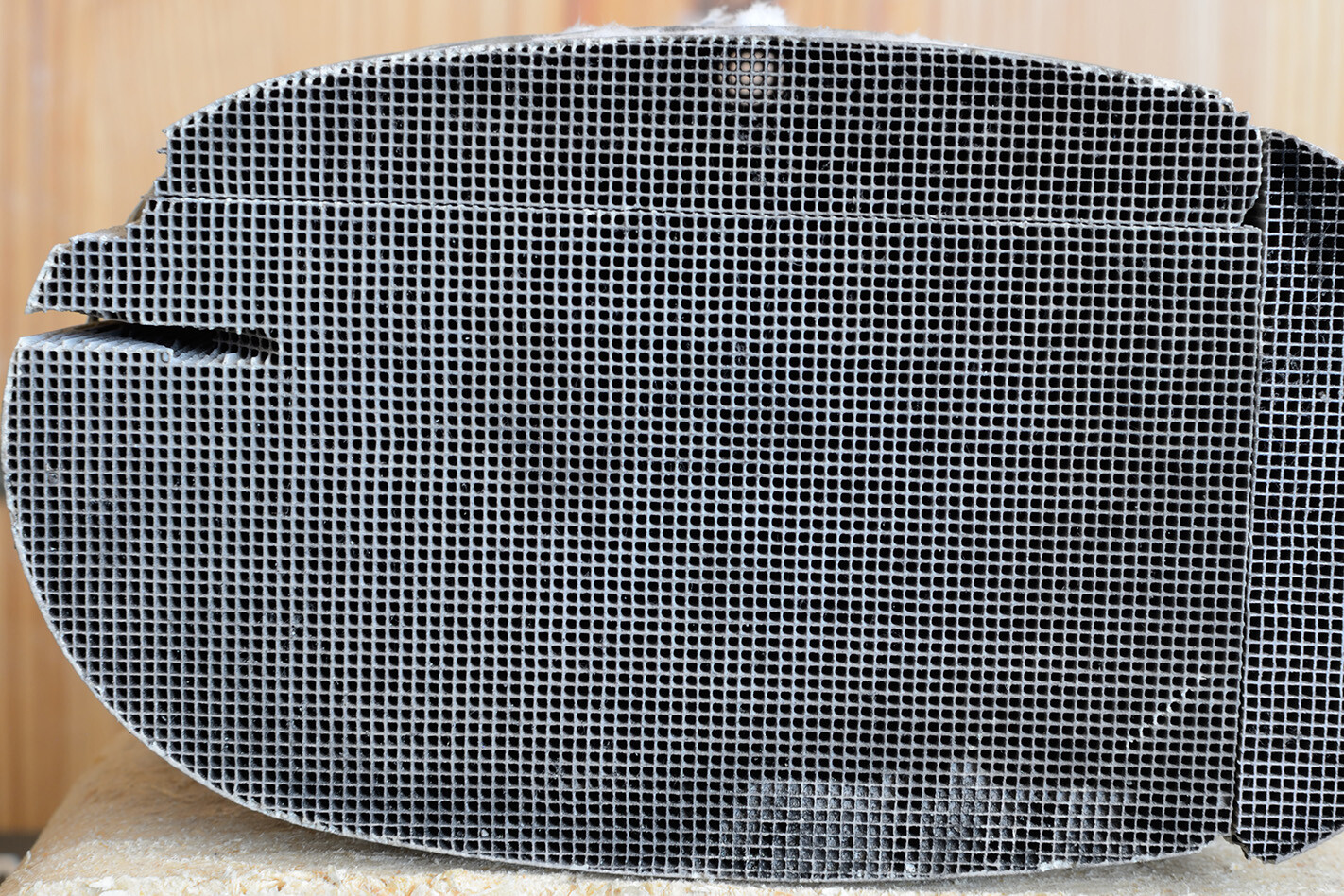

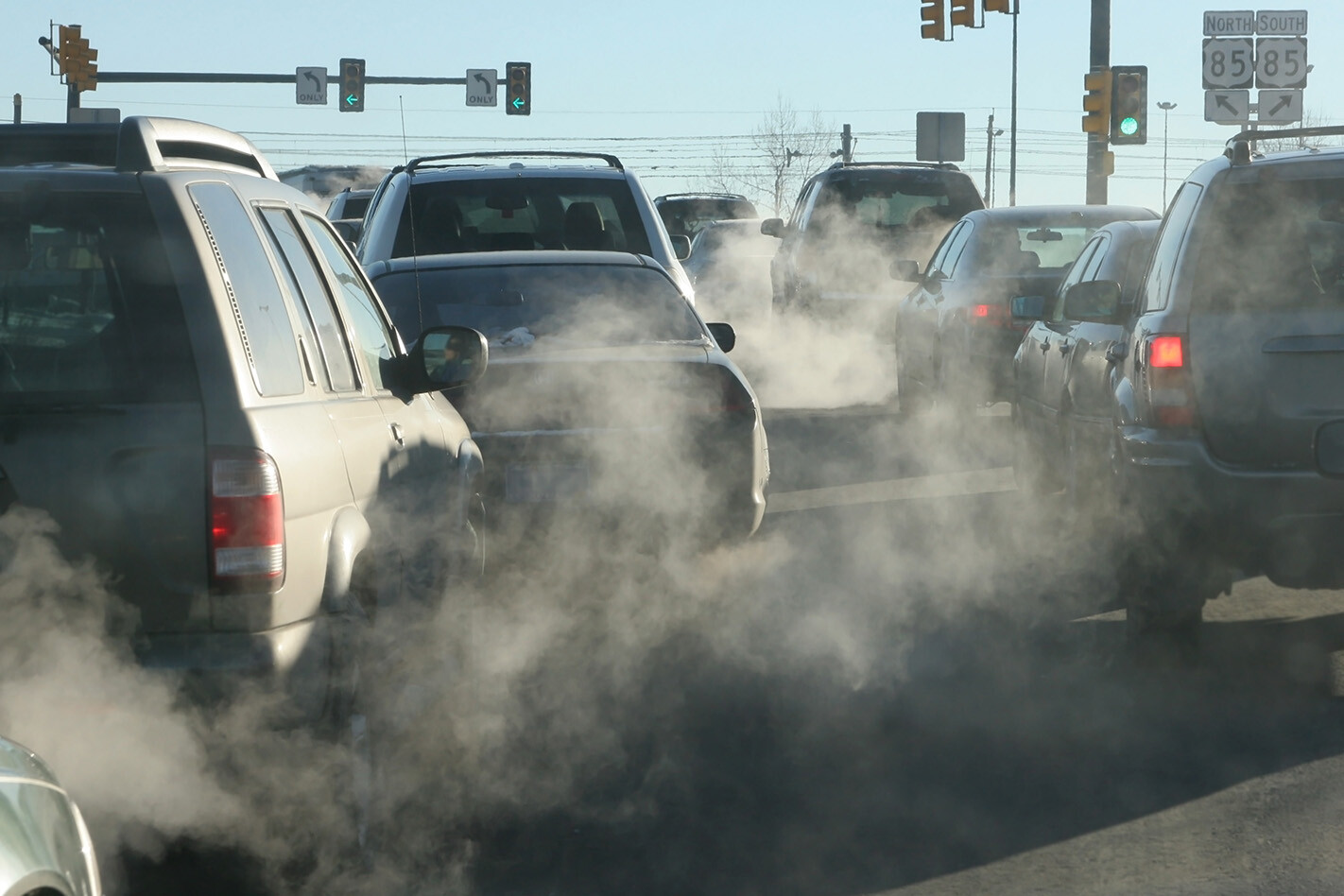




![.Parameters affecting the catalyst performance [15]](https://www.researchgate.net/publication/311634576/figure/fig3/AS:439246080221186@1481735834561/Parameters-affecting-the-catalyst-performance-15_Q320.jpg)
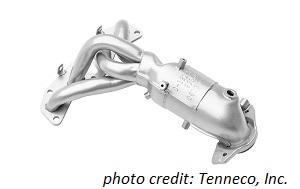
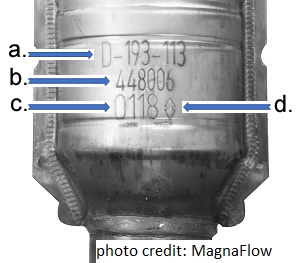 a.) CARB Executive Order approval number, b.) the part number, c.) date of manufacture, and d.) proper installation direction
a.) CARB Executive Order approval number, b.) the part number, c.) date of manufacture, and d.) proper installation direction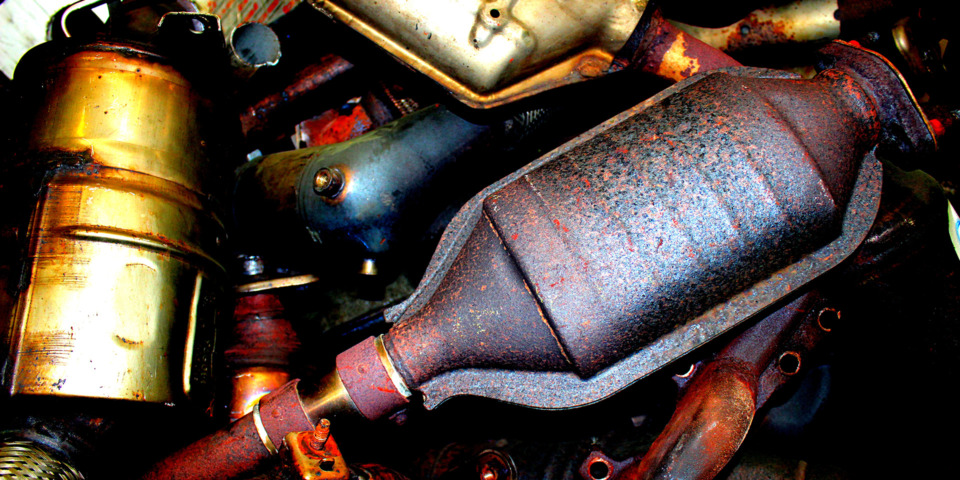
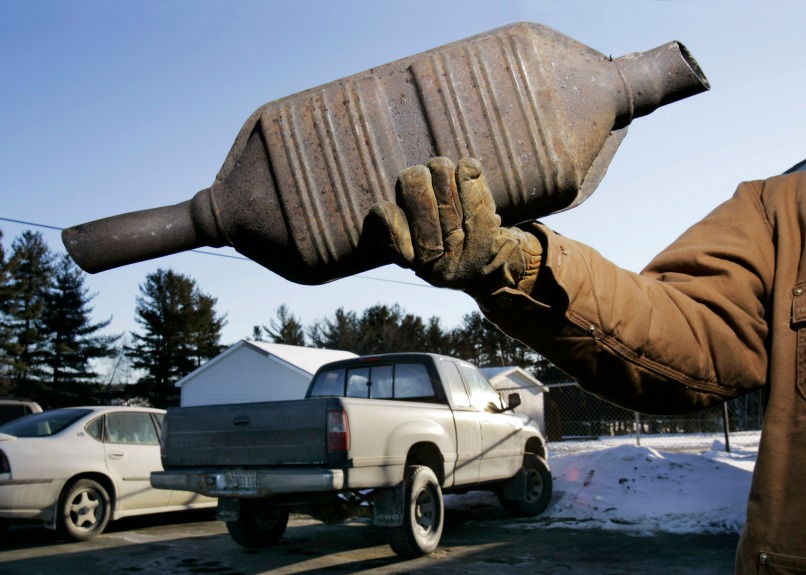
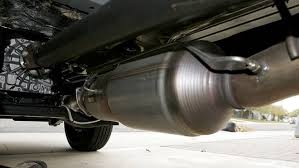

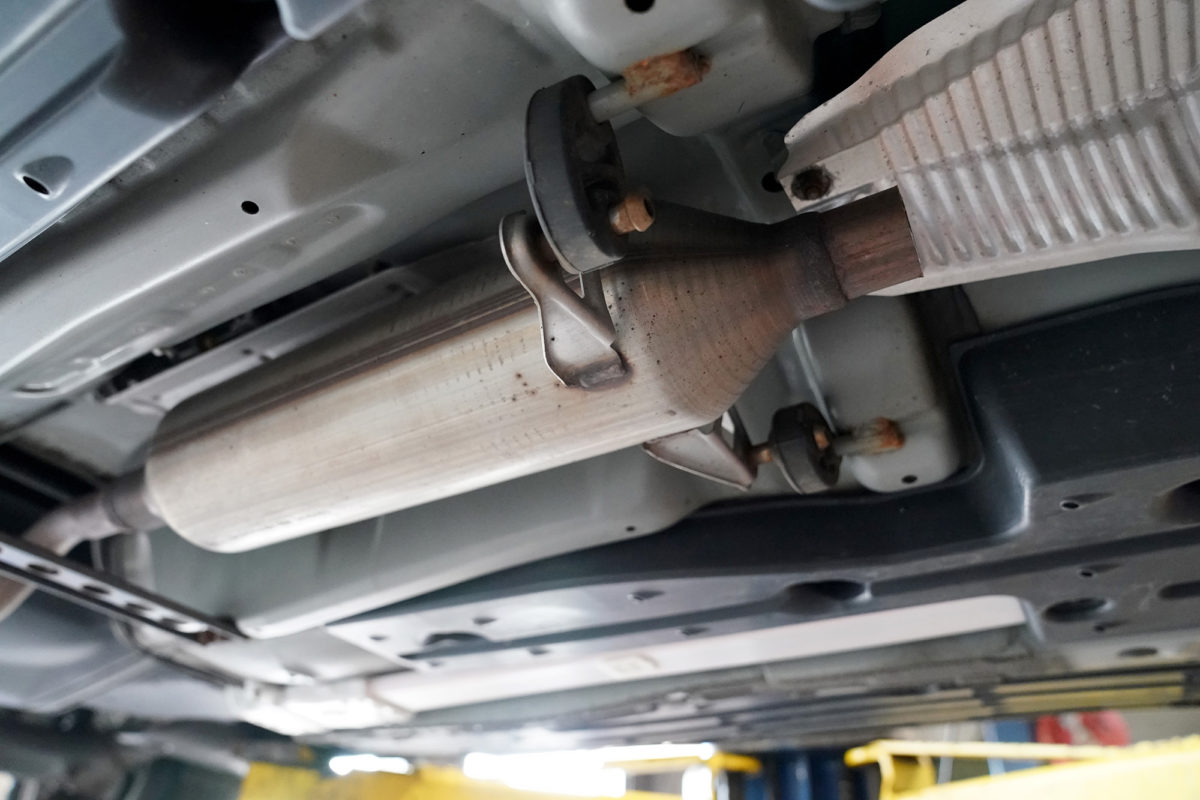





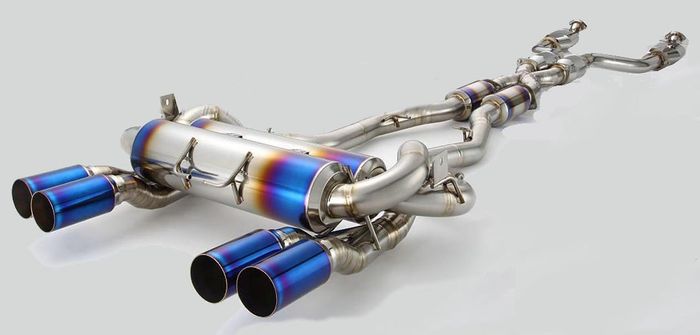



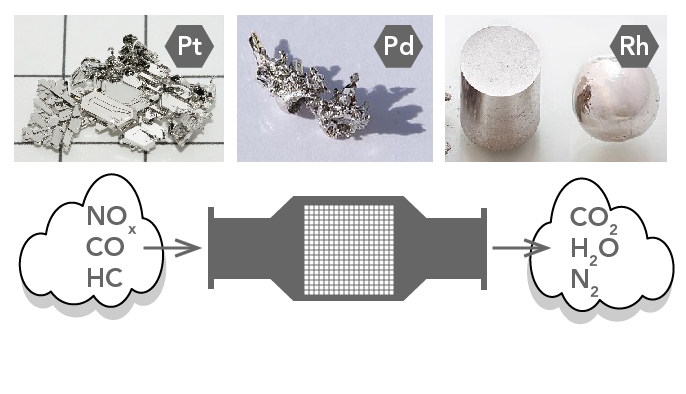
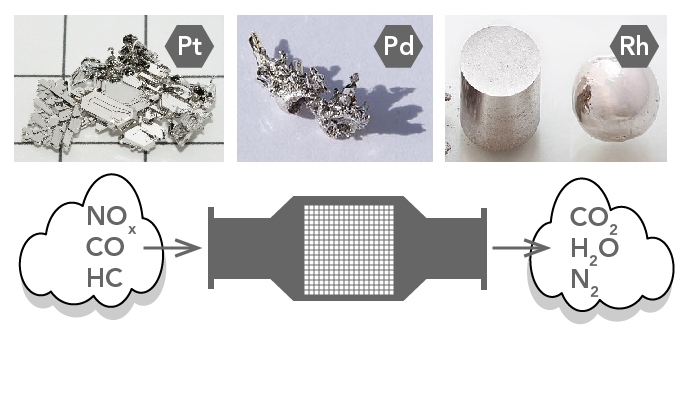 Catalytic converter use elements like Platinum (Pt), Palladium (Pd), and Rhodium (Rh) as catalysts (Let’s Talk Science using photographs by Periodictableru [CC BY], Hi-Res Images of Chemical Elements [CC BY and Alchemist-hp (talk) derivative work: Purpy Pupple [CC BY-SA 3.0] Wikimedia Commons (
Catalytic converter use elements like Platinum (Pt), Palladium (Pd), and Rhodium (Rh) as catalysts (Let’s Talk Science using photographs by Periodictableru [CC BY], Hi-Res Images of Chemical Elements [CC BY and Alchemist-hp (talk) derivative work: Purpy Pupple [CC BY-SA 3.0] Wikimedia Commons (
 Oxidation reactions for carbon monoxide and unburned hydrocarbons (© 2019 Let’s Talk Science).Modern catalytic converters also use oxygen sensors. They’re sometimes called . They control how much extra oxygen gets pumped into the exhaust stream.
Oxidation reactions for carbon monoxide and unburned hydrocarbons (© 2019 Let’s Talk Science).Modern catalytic converters also use oxygen sensors. They’re sometimes called . They control how much extra oxygen gets pumped into the exhaust stream.